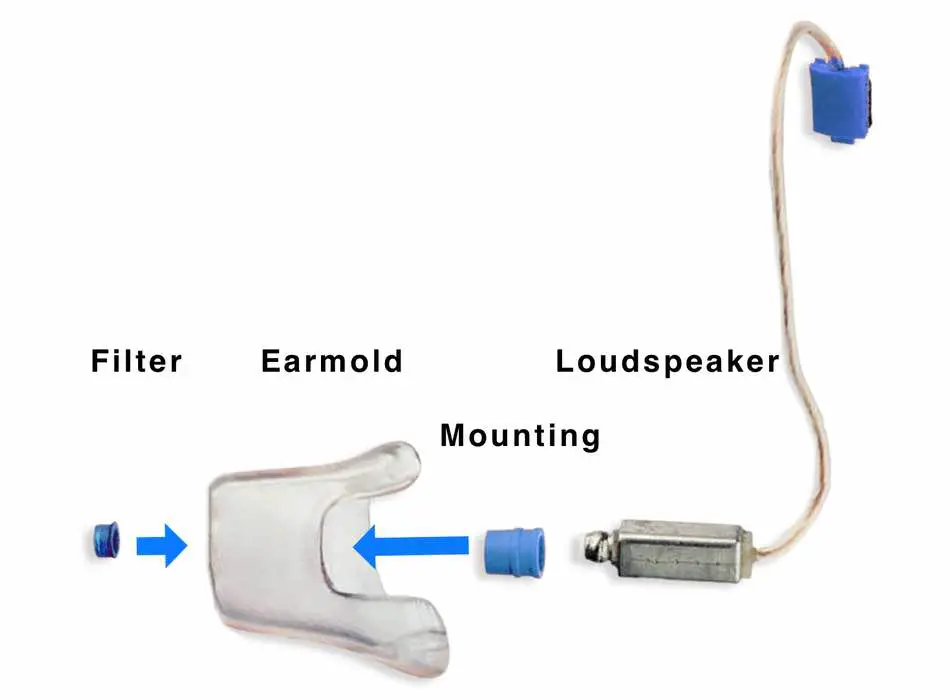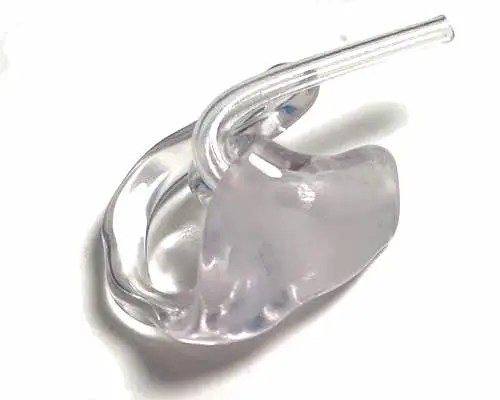A hearing aid needs to fit perfectly in the ear. Oftentimes custom earmolds do a better job compared to standard silicone domes. A custom earmold always sits in the same position which makes the fitting better. Because amplification levels need to be adjusted relative to the loudspeaker in the ear. When another dome is fitted those amplification levels and the performance of the hearing aid also changes.
Read through the whole article to get an idea about the options when it comes to earmolds for hearing aids.
Where Are the Differences in Earmolds?
There are different shapes of custom earmolds available. Some of them are designed in a very inconspicuous way and sit solely in the ear canal. Other shapes utilize the outer part of the ear as an anchorage and are therefore more visible to an observer. But aesthetics are only one portion of the differences an earmold can make.
One of the most distinct differences when it comes to the earmold models is how your own voice sounds. Depending on where the earmold touches your ear canal your own voice will get amplified or sounds natural. When your hearing loss is severe in the lower frequency spectrum this change in your own voice might not affect you. But most people have moderate hearing loss in the higher frequencies.

This means when the ear canal is closed in the outer part the wearer of the earmolds perceives an amplification of their own voice where it is actually not needed at all. When a little material is milled away where the lower jaw is very close to the ear canal this problem can be solved. Luckily your acoustician has a ton of options for your when it comes to the shapes how they can influence the sound as well as with the materials.
The earmold can be made in a very thin foil-like manner. But it can also be produced so it is a very massive piece of plastic. A foil-like ear mold for example gives your ear the possibility to dissipate warmth more effectively which can be beneficial to someone who sweats a lot in the ear canal. A more massive earmold in contrast could be easier to handle. Custom earmolds are available for hearing aids with tubes and RIC (receiver in the ear canal) devices.
What Materials Are Available for Earmolds?
There are a lot of options when it comes to the materials for custom earmolds. The recommendations for the materials change depending on how soft the tissue is of your ears. A general rule says the softer the tissue of your ear the harder the material of the earmold should be. But of course, when allergies or special wishes for the shape of the earmold come into play your hearing care specialist will combine all the needs and wishes and will choose the right material for you. The materials available are:
- Light-activated resins
- Acrylic
- Silicone
- Polyurethane
- Titanium
Soft Materials
Soft materials are mostly made of silicone, they come in different degrees of hardness. Soft materials have the advantage that they are flexible and adapt well to the shape of the ear canal. However, they are often not so easy to insert due to their flexible shape. In most cases with a little cream, it is still not a problem, and the soft earmold slips in the correct position. Soft materials do not last as long as hard materials do. They change the color due to the earwax that we have in our ear canals.
Hard Materials
Hard materials are oftentimes acrylic and light-activated resins. In most cases when the wearer of the hearing aids has limited movement in the fingers a harder ear mold is the better option. They are easier to insert and very durable. Due to the smooth surface, they are also very easy to clean.

A big benefit of hard materials is the reduced wall thickness. Oftentimes the titanium ear molds for example will have the thinnest wall thickness which leads to a smaller earmold that can be positioned deeper in the ear canal.
Materials That Get Softer When Inserted in the Ear Canal
Its materials like Polyurethane which is relatively hard at room temperature and become soft as soon as the earmold adapts to your body temperature. They are therefore easy to insert at first, and once they have become a little warmer in your ear, they get a little more flexible in the ear canal.
How Long Does an Earmold Last?
A custom earmold lasts longer the harder it is. Typically hard materials last 4-6 years while softer materials have a life span from 1.5 years up to 3 years. The life span is highly dependent on how you clean your earmold, your earwax, and your sweat. The more aggressive the sweat fir example the shorter the life span of the custom earmold will be.
Common Problems With Earmolds – And How to Troubleshoot Them
The Voice of the Wearer Sounds Too Loud
If a hearing aid user complains that their own voice sounds too loud the acoustician has several options for optimizations. In some cases, it is sufficient to change the amplification levels in the software. By reducing the amplification of the lower frequency spectrum oftentimes the effect of a louder voice can be reduced.
When it is still present a larger vent could be used or a cutout. The acoustician must then localize when the lower jaw is the nearest relative to the ear canal. When this area gets milled away the lower jaw will transfer the vibrations so much into the ear canal and the voice will sound more natural gain. Alternatively, the ear canal should be clogged with the earmold in the bony part and the rest stays open. This will give the lower jaw more ways to move and the voice will sound as natural as it can.
Feedback or Whisteling
When you just got your new earmolds and you hear whistling from time to time your acoustician can have several options to troubleshoot this problem. In fact, this topic is a little bigger this is why I already wrote a whole article here for just how to get rid of the whistling/feedback.
In short, the sound is leaking somewhere. The acoustician has either the option to turn down the amplification or to close the leakage.
The Earmold Does Not Fit Well
When the earmold is not staying in place or it hurts after a while you should revisit your hearing care specialist. In most cases, the company which designed the custom earmold will provide you and the acoustician with a satisfaction guarantee. In case the acoustician can not handle the problem directly in the shop/clinic the earmold simply needs to be redone in combination with the instructions of your hearing care specialist.
